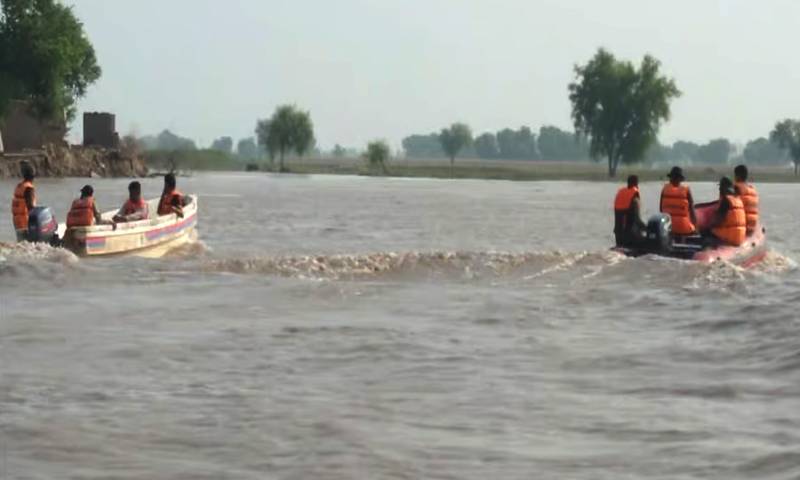LAHORE: Punjab is facing the worst flooding in its history, brought on by torrential monsoon rains and what officials have termed “Indian water aggression.”
The devastating situation has already left two million people affected across the province, displacing entire communities and submerging thousands of villages.
According to Irfan Ali Kathia, Director General of the Provincial Disaster Management Authority (PDMA), unprecedented flood levels have been recorded in all three major rivers of Punjab.
The official confirmed that more than 2,200 villages are underwater, while large-scale rescue and relief operations are ongoing. So far, approximately 750,000 people have been evacuated to safer locations in what has been described as one of the largest humanitarian operations in recent memory.
Kathia elaborated that in the Sutlej River, water levels at Kasur have shown signs of decline, yet levels at Head Sulemanki are rising and are expected to increase further by evening. He cautioned that on September 2, floodwaters from the Sutlej and Chenab rivers are likely to converge, intensifying the crisis.
At Trimmu Barrage, the water flow has already surged to 361,633 cusecs, with further increases anticipated. By tomorrow, floodwaters from the Ravi and Chenab are expected to reach Head Muhammad Wala and parts of Multan, posing serious risks around Head Muhammad Wala and Sher Shah Bridge. Kathia stressed that saving lives and ensuring the evacuation of populations in vulnerable areas remains the government’s foremost priority.
Meanwhile, a fresh wave of monsoon rains has struck several regions of the country, worsening the already fragile situation. In Lahore, heavy and intermittent downpours lashed multiple neighborhoods.
The rains triggered tragic incidents, including the deaths of two individuals after a lightning strike in Kahna, and the collapse of a roof in Ferozewala, which killed a woman and injured three others. Similar heavy rainfall was reported in Faisalabad, Narowal, Bahawalnagar, and other districts of Punjab, where urban flooding has inundated low-lying areas.
In many regions, rainwater accumulation led to significant disruption, while numerous electric feeders tripped, leaving neighborhoods without electricity for hours.
The popular hill station Murree also witnessed relentless downpours, further complicating travel and safety in the region. Heavy rains extended into Azad Kashmir, where towns such as Mirpur and Bagh recorded intense showers, raising fears of flash floods in streams and nullahs. In Khyber Pakhtunkhwa, including Abbottabad, heavy rainfall also increased the likelihood of flooding and landslides.
In response to the worsening situation, the National Disaster Management Authority (NDMA) has issued a nationwide alert, warning that continued heavy rains may trigger flooding in low-lying areas and landslides in hilly and mountainous terrain.
The Meteorological Department has forecast a prolonged spell of rain accompanied by thunderstorms. According to officials, Islamabad is expected to experience rainfall from Saturday through Tuesday, while northern and northeastern Punjab, including Lahore and Sialkot, are likely to receive heavy showers on Sunday and Monday.
Forecasts further indicate that central and southern Punjab will also witness widespread rainfall in the coming days, heightening fears of additional flooding and further displacement of communities.–APP


Comments are closed.